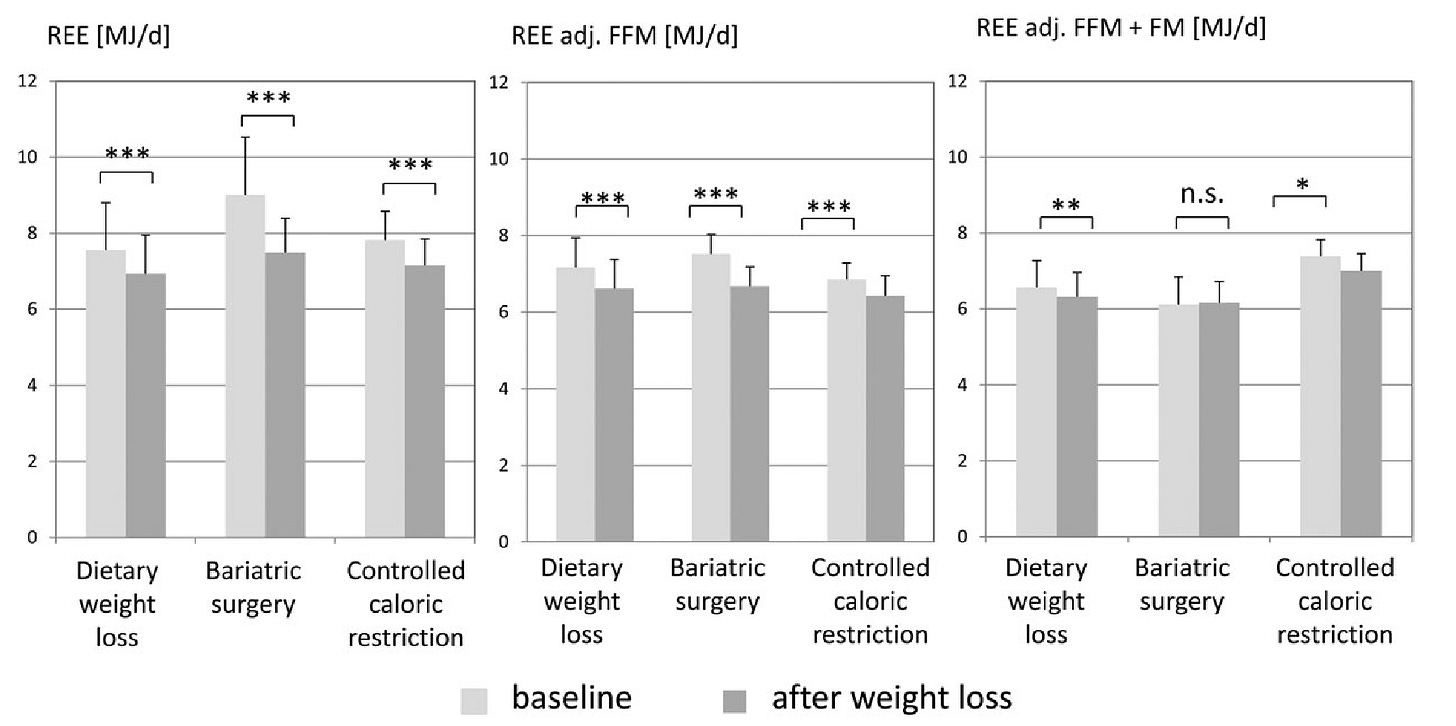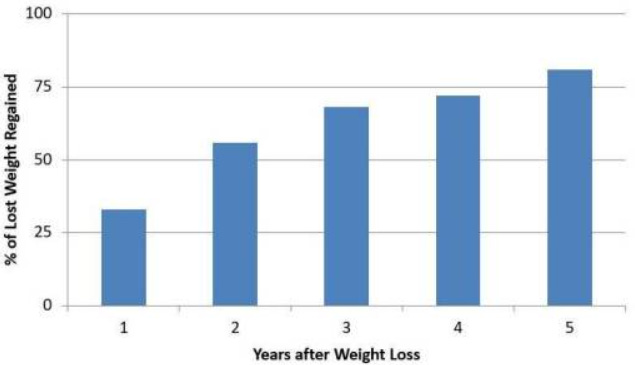Welcome to The Spotter!
I am Nolan Vannata. This newsletter is a part of my mission to make health, fitness, and nutrition content that is evidence-based, digestible, practical, and accessible.
Humans, like many other species, survived and evolved partially because of our innate desire for food, specifically calorie dense foods, and comfortable environments. Without it, we would have starved or gotten killed long ago. What was once a beneficial hard-wiring is now working against many of us as we face an obesity epidemic.
It is unfortunately common for individuals with excess body fat to think, “What is wrong with me?”, when in reality, their body is doing exactly what made us humans resourceful survivors.
Daniel E. Lieberman, a professor in the Department of Human Evolutionary Biology at Harvard University, describes in his book, “Exercised”, the phenomenon that only recently in human history are we exercising for the sake of health and fitness. Unless there was some sort of immediate reward (like food), physical activity and energy expenditure would have done more harm than good because of the scarcity of food and resources before modern history.
So, rather than thinking you are broken, one with excess body fat can think of themselves as living with the right genetics, but in the wrong environment. However, going against this environment comes with consistent challenges and obstacles, making sustainable weight loss a difficult task.
“Substantial weight loss” is not a specific number. For you, that could be 10, 25, 50, or 100 pounds. The principles are the same regardless of the number. With that being said, I will use the example of losing 50 pounds frequently in this guide to give us a consistent number to use.
This guide will cover:
The roadmap: How long will this take, and what obstacles will you face?
Going from
point A to point Bpoint B to point A.What to do right now.
Weight loss maintenance.
The roadmap
As mentioned above, I’ll use the example of losing 50 pounds. If you were to see linear progress (which, you won’t), how long would this take?
At a rate of 1 pound per week, this will take 50 weeks, or just under 1 year. Losing weight at 1 pound per week is about a 500-calorie deficit per day, equating to a 3,500-calorie deficit per week. Of course, you may decide to have a more aggressive approach and aim for 1.5-2 pounds per week. That might work for you. However, things aren’t this simple.
From a physiological standpoint, weight loss becomes increasingly harder as you get to a lower weight. This is because of something called adaptative thermogenesis, which refers to the drop in resting and non-resting metabolism due to underfeeding. Again, another previous survival mechanism is now an obstacle.
In the article, “Adaptive thermogenesis with weight loss in humans”, you can see this phenomenon in the graphs below. You don’t have to understand the exact numbers to understand the concept.
This is why weight loss does not happen at a consistent rate even if you have consistent habits. It’s not a line, it’s a slope with an eventual plateau. The authors from the study above also state,
“Adaptive thermogenesis accounts to an average of 0.5 MJ (or 120 kcal) with a considerable between subject variance.”
Variance is the keyword here. Some people adapt less to underfeeding, making weight loss easier, and some people have a stronger reaction to underfeeding, slowing down the pace of your results.
Physiology aside, there are other practical and social obstacles in your way. One-week vacation where you don’t stick to your diet? Likely a two-week set back. Thanksgiving and winter holidays? Potentially another week of regression. One of the craziest workdays of your life? One or two days of weight gain.
This is meant to help you manage expectations, not scare you. If I were to ask you at the onset of taking on any massive goal, “Will you have any setbacks or low points along the way?”, you would probably say yes. However, those low points do feel different when you are actually in them. If and when you hit one of those low points, remind yourself that it’s all part of the process and you’ll get back on track ASAP.
Going from point A to point B point B to point A
I find a ton of value in starting with the end goal and then working backwards.
I want you to visualize for a moment. Picture yourself at your goal. You can picture how you look and feel, but for now, I want you to direct your focus somewhere else. What is ‘future you’ doing on a daily basis? What kinds of meals are you eating? What are you doing for exercise, and how often are you doing those things? What things are you doing to manage your stress? Are you sleeping well to support recovery and feel energized? Are you kind to yourself when you do something “unhealthy” even though you are living a healthy lifestyle 95% of the time?
‘Future you’ has different habits than the present version of yourself. That’s what makes them different.
What to do RIGHT NOW
If you’re serious about this, grab a pen and paper or open up a word document or note sheet on your phone. Seriously, don’t close this article until you do this.
Revisit your roadmap and set some expectations. What obstacles will you face? How will you react to low points and regressions? How will you celebrate your wins? Roughly how long will this process take? I highly recommend writing down the answers to these questions so you can revisit them.
Now, revisit your ‘future you’. Again, write down all of the usual daily habits of the version of you that has reached your goal. If you end up writing a list of over twenty things, try not to be overwhelmed. Decide on which habit you would like to work on first. Just one of them. Is it meal planning/prepping? Signing up for an exercise class? Limiting screen time at night for better sleep quality? Doing only one of these things might seem too easy, but that’s the point. See if you can stick with it for a week or two, and earn the second habit, and then the third, and so on. If you can’t stick with one or two changes, you probably won’t stick with ten or more.
The maintenance phase
I am guessing you want to maintain your weight loss as much as possible. Fortunately, if you take the habit-change approach instead of crash dieting, your chances of rebounding are much lower. Below is a graph from the article, “Maintenance of Lost Weight and Long-Term Management of Obesity”, which shows weight regain statistics in the United States. On average, people regain 80% of their weight lost after 5 years.
I have written about weight loss maintenance previously in the article linked below. Again, if you are serious about this, I highly recommend reading that one if you haven’t.
If substantial weight loss is a goal, did you write down your roadmap and future habits? Did you take any specific actions towards this goal? While the idea is fresh in your mind, do something before closing this article.
Even if you’re not completely interested in getting a coach, but you want someone to bounce ideas off of, use my link below to schedule a call. I’m happy to chat with you.
Either way, YOU GOT THIS!
What’s Next? Processed Foods Can Be Healthy
Skip the learning curve, get a coach.
You deserve more than fad diets and one-size-fits-all fitness programs. If you need help with your fitness, nutrition, or both, schedule a FREE call with me by clicking this link. Use this call to ask any questions and learn how online coaching works.
Not ready? Visit thespottercoaching.com for more information.








Super interesting, thanks!